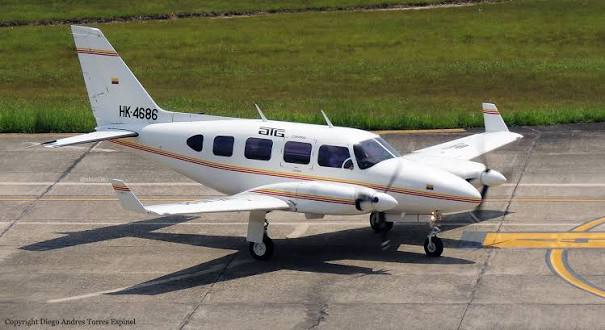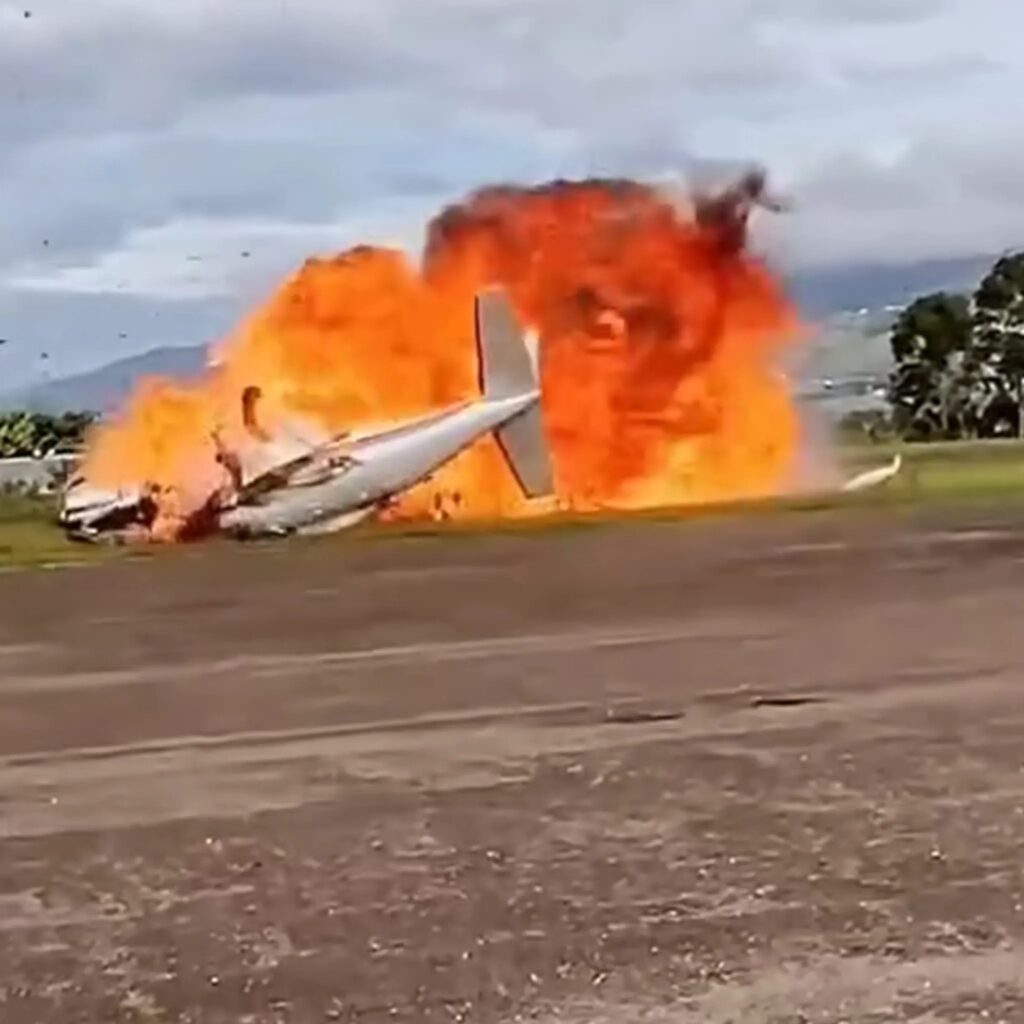
A tragic aviation accident occurred in Venezuela’s western region when a Piper PA-31 Navajo aircraft went down near San Cristóbal, Táchira State, claiming the lives of both people onboard. The small twin-engine aircraft, often used for regional transport and private charter flights, was reportedly en route from Caracas to San Cristóbal when it crashed during its final approach to the airport.
According to early reports from Venezuelan civil aviation authorities, the aircraft disappeared from radar shortly before reaching Paramillo Airport, the main airfield serving San Cristóbal. Witnesses in nearby rural communities said they saw the plane descending rapidly and then heard a loud explosion as it struck a hillside surrounded by dense vegetation. The wreckage was discovered a few kilometers from the runway, severely damaged and engulfed in flames.
Local emergency teams, firefighters, and members of Venezuela’s National Guard quickly responded to the scene. Unfortunately, when rescuers reached the site, both the pilot and co-pilot were found deceased. The intense fire caused by the crash made recovery efforts difficult. Authorities worked through the evening to secure the area and recover the remains of the victims.

Investigators from the Instituto Nacional de Aeronáutica Civil (INAC) have launched a full inquiry to determine the cause of the accident. Early speculation suggests that adverse weather conditions could have played a role, as the Táchira region was experiencing heavy rain and low visibility at the time of the incident. However, officials have not ruled out mechanical failure or pilot error as potential contributing factors.
The Piper PA-31 Navajo, designed in the United States during the 1960s, is a reliable aircraft favored for its versatility in passenger and cargo operations. Despite its strong reputation, accidents involving aging airframes have raised safety concerns in parts of Latin America, where some operators continue to fly older aircraft due to economic limitations and maintenance challenges.
Residents of the area described a frightening scene. “We heard the engines struggling, like they were losing power,” said one local farmer who witnessed the crash. “Then there was a huge flash and smoke. We ran to help, but it was too late.”
Authorities have not yet released the identities of the victims, pending notification of their families. Local media outlets have reported that the aircraft may have been operating on a private charter, though this has not been officially confirmed.
This tragedy marks another difficult moment for Venezuela’s aviation community, which has suffered a series of small-plane accidents in recent years. Each incident renews debate over the country’s aviation oversight, pilot training standards, and the state of maintenance infrastructure.
In a statement, INAC expressed condolences to the victims’ families and assured the public that a thorough technical investigation will be conducted. “Our priority is to determine the causes of this unfortunate event to prevent similar occurrences in the future,” the agency said.
As night fell over San Cristóbal, the crash site remained under guard while investigators collected evidence and documented debris patterns. Parts of the fuselage, wings, and engines will be sent to a laboratory for detailed examination. The aircraft’s flight data recorder, if installed, could provide crucial information about the final minutes of the flight.
For the people of San Cristóbal, the accident is a painful reminder of the risks associated with regional air travel, especially in challenging mountainous terrain. What began as a routine flight ended in heartbreak for two families — and a somber chapter in Venezuela’s ongoing struggle to ensure aviation safety in its skies.


